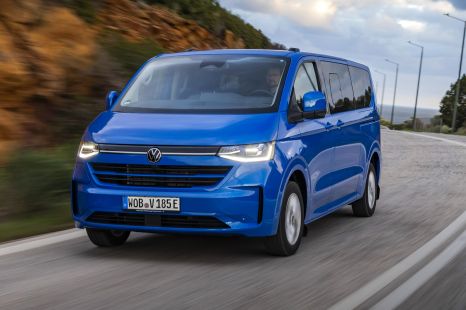

Dave Humphreys
2025 Volkswagen Transporter review: Quick drive
5 Months Ago
Hyundai says the space-age Staria Load represents a giant leap for van kind. In practice, it's a refined and safe van with a sharp price tag.
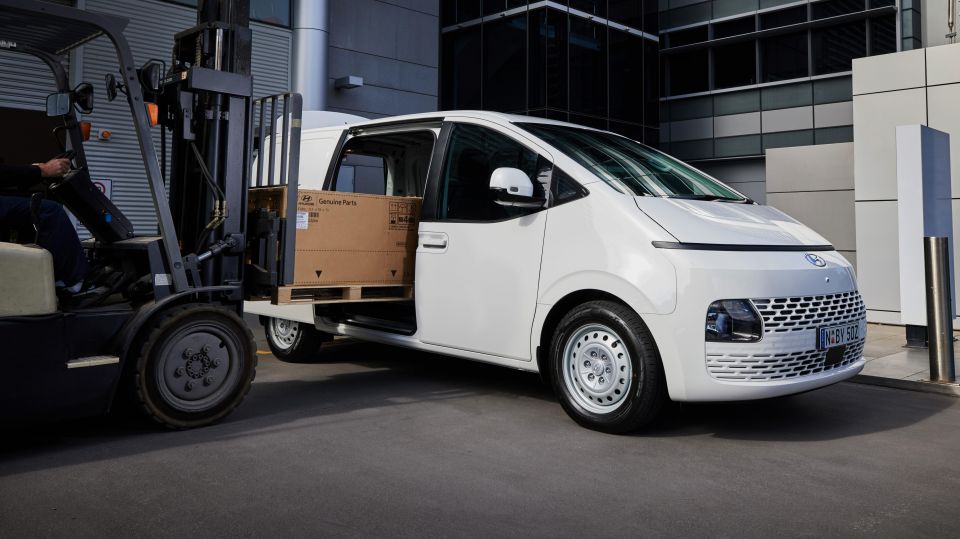
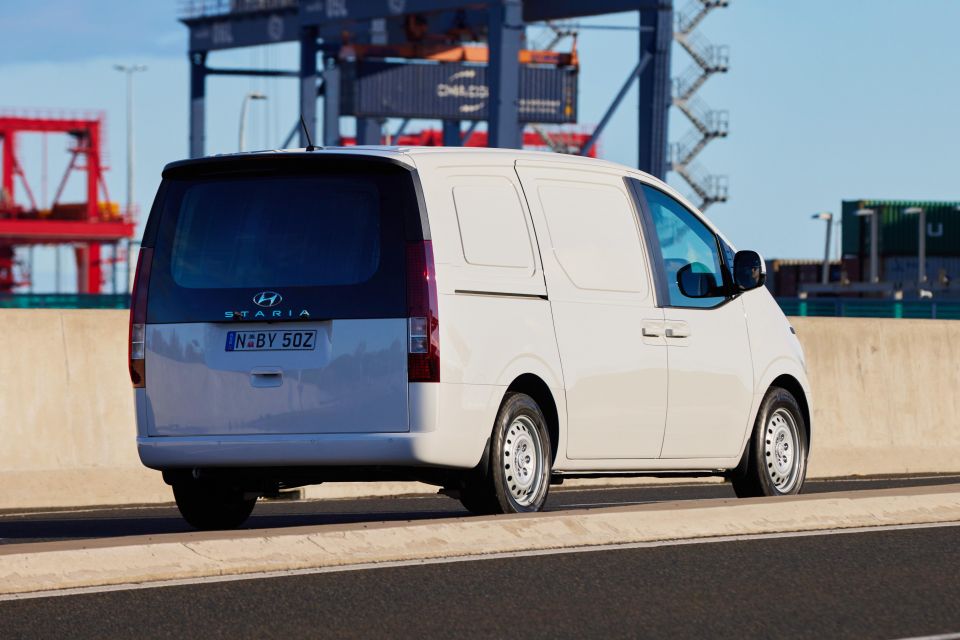

Contributor

Contributor


Contributor

Contributor
Where expert car reviews meet expert car buying – CarExpert gives you trusted advice, personalised service and real savings on your next new car.
First came the Hyundai Staria people mover, a futuristic eight-seater with a face inspired by Dr Who. Now, there’s a load-lugging version for tradies and delivery drivers.
Hyundai isn’t being subtle about its aspirations for the Staria Load, which picks up where the 14 year-old iLoad leaves off.
Where its predecessor was a commercial vehicle to its core, the new Staria Load shares its bones with the Santa Fe SUV, Kia Carnival people mover, and of course the people-moving Staria eight-seater.

It goes head-to-head with the Toyota HiAce, Ford Transit Custom, Mitsubishi Express, Renault Trafic, and Volkswagen Transporter in Australia’s biggest van market.
Sure, they’re not the sexiest vehicles on the road, but these vans are a big deal for their manufacturers.
With a more car-like drive, a broad range of standard safety features including some segment-firsts, and what Hyundai promises is a more useful load bay than that of the iLoad and Toyota HiAce, the Staria Load has the makings of a great van on paper.
Does that translate to a giant leap for van kind in the real world?
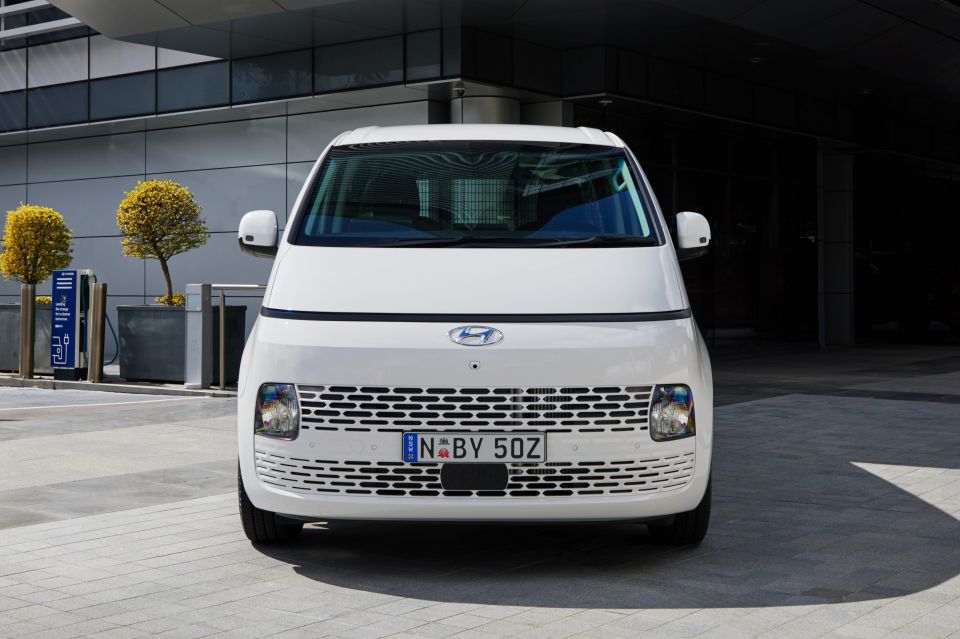
Hyundai has kept things simple for the 2022 Staria Load.
Just two models are offered, starting with the two-seat Staria Load Van on test here. It’s priced from $45,740 before on-road costs.
That’s up by $2530 on the iLoad, although Hyundai says the extra safety equipment, newer infotainment, and more refined drive are worth far more than $2530. The five-seat crew van has a sticker price of $48,240 before on-roads.
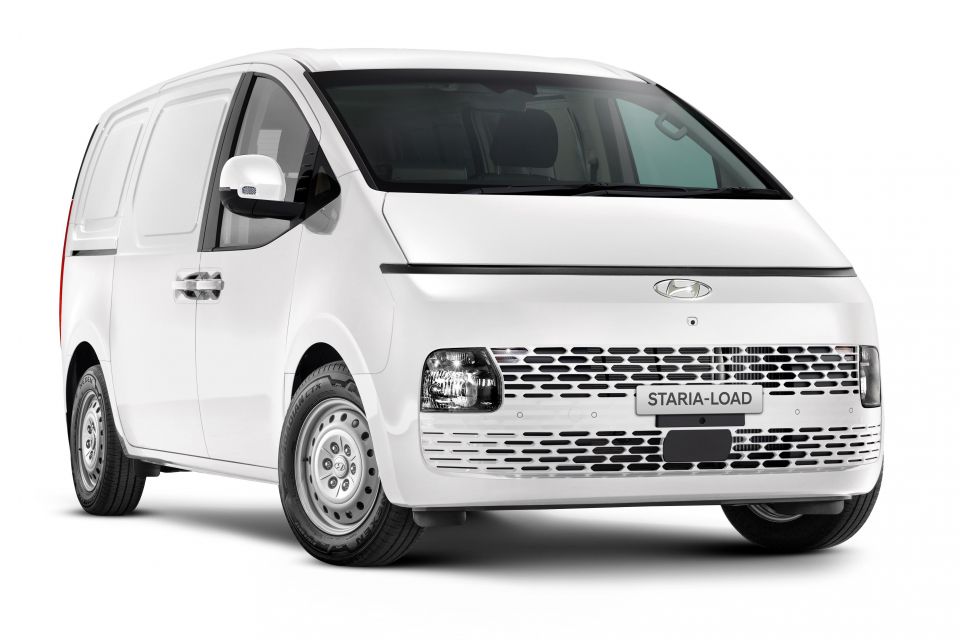
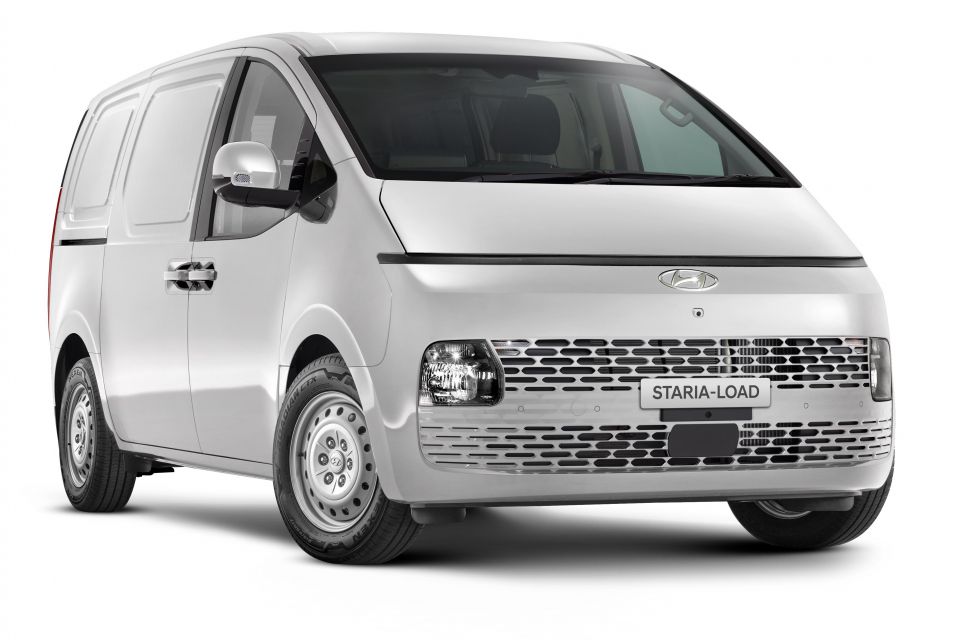
Hyundai only offers white or silver paint, although that’s actually one more than Toyota offers on the HiAce. Shimmering Silver metallic is a $695 option.
Speaking of the HiAce, the range kicks off below $45,000 before on-road costs for a six-speed manual, but the six-speed automatic equivalent to the base Staria Load is priced at $46,230 before on-road costs.
The Ford Transit Custom automatic kicks off at $45,290 before on-roads, the long-wheelbase ups the price to $48,090 before on-roads. The Staria Load slots between the two dimensionally.
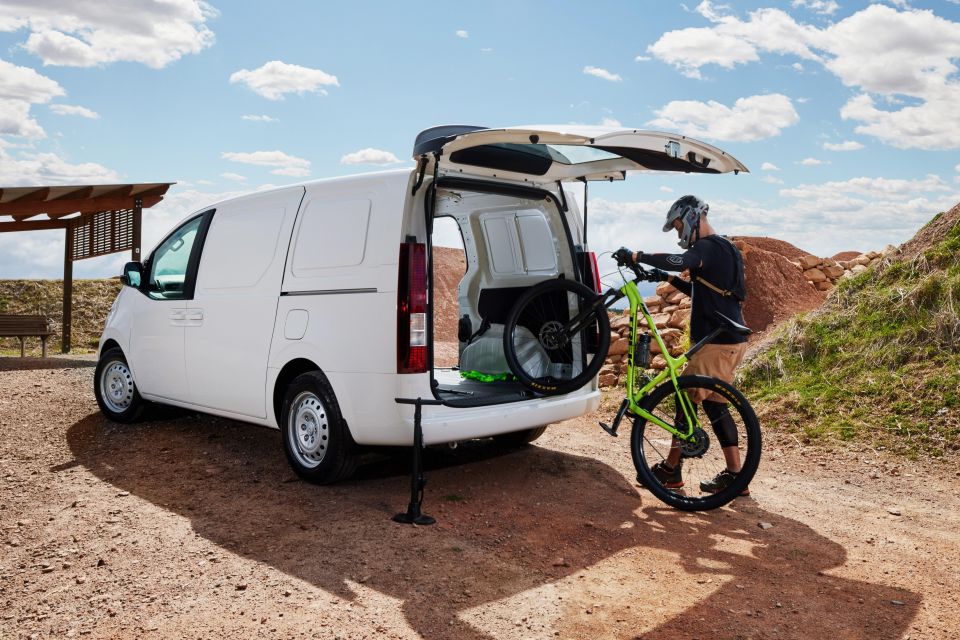
Hyundai only offers one version of the Staria Load with two different seating configurations.
Standard equipment includes:
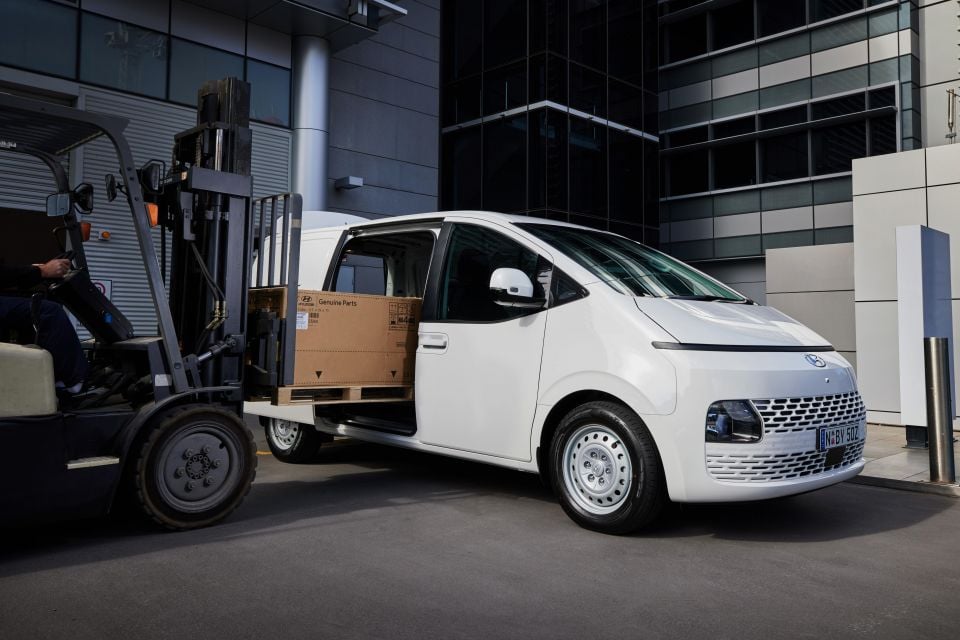
The Staria Load and its people mover sibling have yet to be tested by ANCAP, but Hyundai is promising it will be the safest van in its class.
Standard safety equipment includes:
Hyundai has gone all-out, but one inclusion feels a bit cheap. A big part of safety is being able to see where you’re going, and Hyundai has stuck with halogen headlights in place of the brighter LED units you get on people mover versions.
Crisp, bright LED lights would go a long way to making the Staria feel more like a “great leap forward for van kind”.
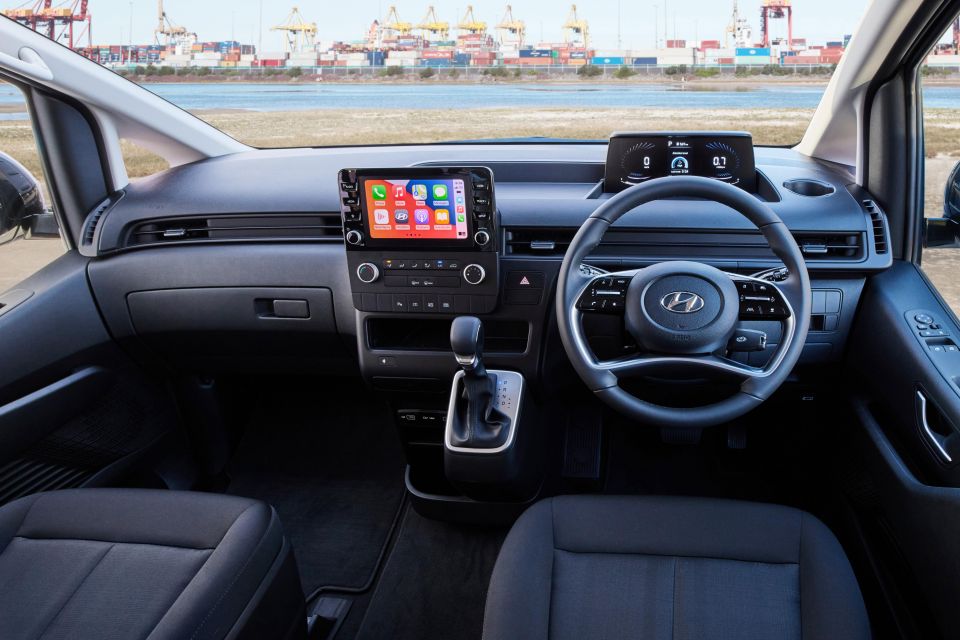
Sure, what’s up front in the Staria is important, but plenty of owners are going to be more concerned with what’s hiding in the load bay.
Cargo volume is up from 4426L to 4935L using the VDA standard in our two-seat van, which means the cargo bay can now swallow three Euro pallets instead of two.
At 2607mm long, 1640mm wide, and 1436mm tall, the load bay has grown by 232mm, 20mm, and 96mm respectively compared to the iLoad.
Although it’s longer and taller than the best-selling HiAce (by 77mm and 96mm respectively), the load bay in the Toyota is 120mm wider.
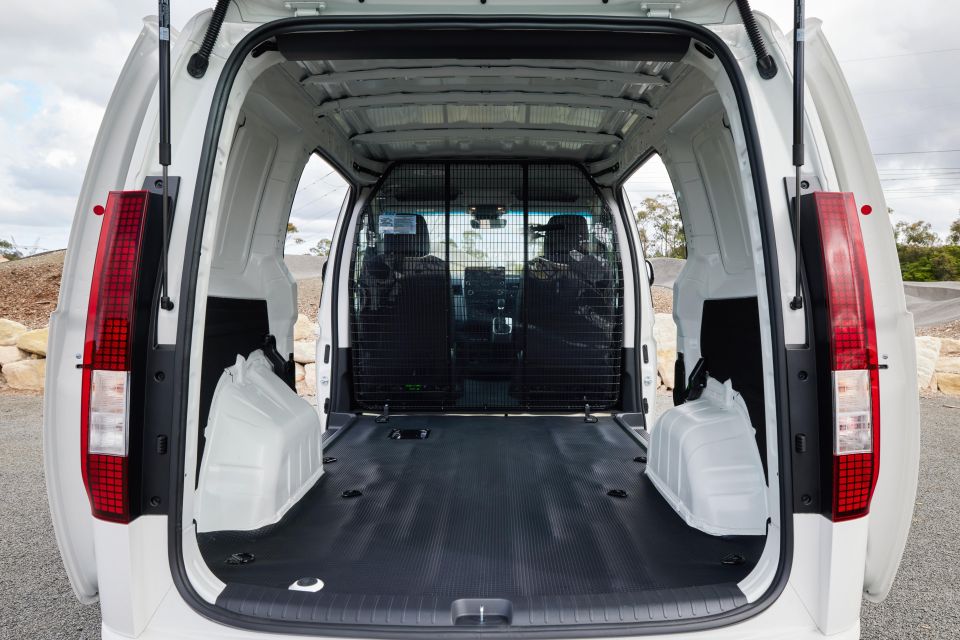
The side doors in the Staria Load open to the equivalent of 870mm instead of the 645mm the iLoad managed, while the loading height has dropped from 614mm to 573mm.
Although there’s no barn-doors as standard at the rear, Hyundai says you’re able to load pallets through the side using a forklift thanks to the wider-opening sliding doors. The floor is lined with rubber, and all Load buyers will get a cargo barrier with a plastic screen as standard.
Up front, the Load is like a Staria people mover… but less exciting.
The digital instruments facing the driver are incredibly simple, with a big, calculator-style speed readout and rev display flanking the same trip computer you get in everything Hyundai and Kia. There’s no messing around with screens or configurations here; clearly Hyundai has focused on at-a-glance legibility.
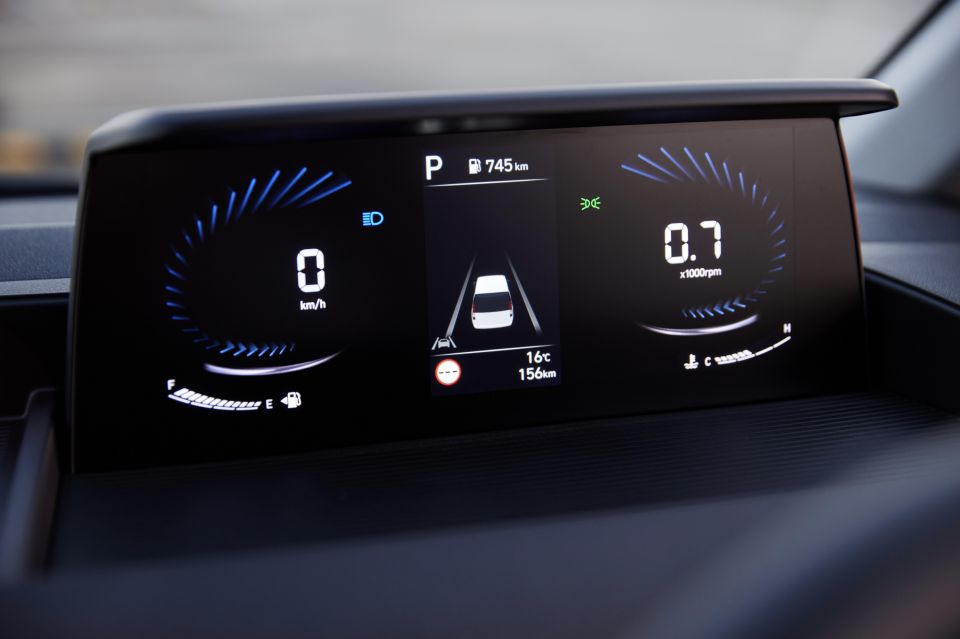
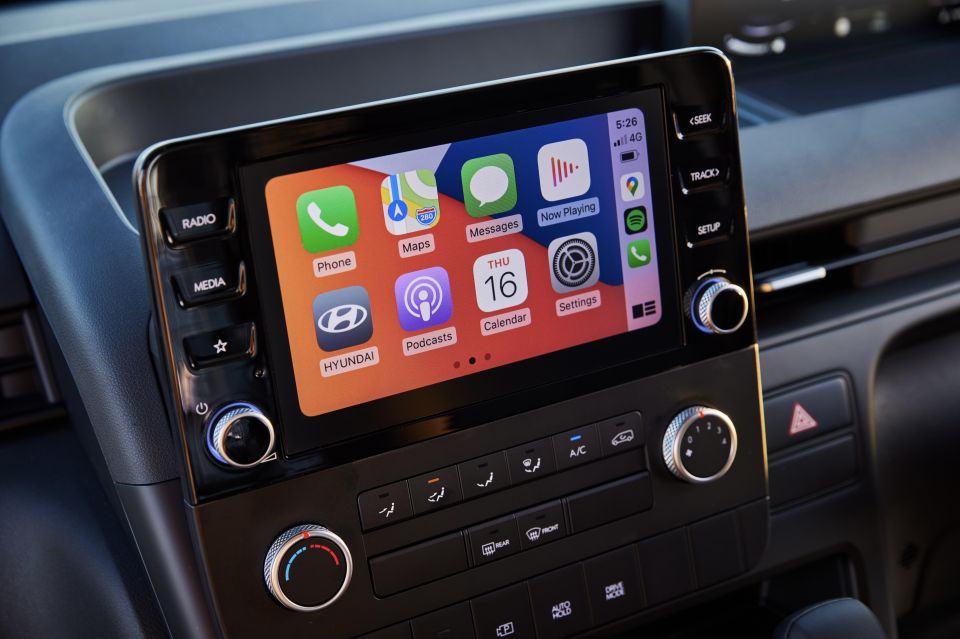
Infotainment comes courtesy of an 8.0-inch touchscreen mounted within easy reach of the driver, and complete with wireless Apple CarPlay and Android Auto.
Unlike in the earliest examples of this system, the wireless smartphone mirroring on this Staria tester worked perfectly. Combined with wireless phone charging, it’s a great feature for tradies who live from job-to-job and might otherwise rely on a phone cradle.
Beyond wireless phone mirroring, there’s DAB+ and AM/FM radio and conventional Bluetooth phone connectivity. You can’t get factory satellite navigation, which isn’t ideal if you frequent places with poor phone reception.
The sound system is a bit muddy, but it can be turned up enough to drown out any road noise.
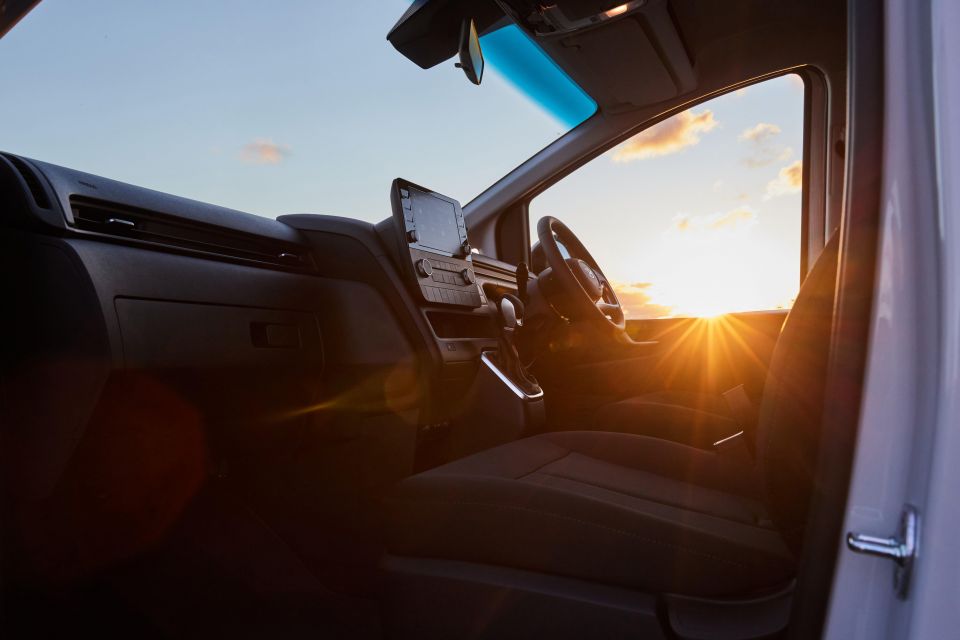
There’s acres of storage space. Open areas atop the dashboard, netted pockets above the sun visors, three tiers of in-door storage, and plenty of room beneath the dashboard. There’s also a dash-top cupholder on the driver’s side, and a Porsche 911-style pop-out cupholder. It’s one of many similarities.
The driver and passenger sit in well-padded cloth seats, but they don’t slide quite far enough back for taller pilots. There’s also no fold-down armrest, something the old iLoad did have.
You sit nice and high, with a panoramic view out the deep windscreen and windows, while the steering wheel has been lifted directly from the latest Tucson. It’s a quality item.
Hyundai hasn’t laid on too many soft-touch plastics, but the standard floor mats and flashes of silver trim are nice touches.
It’s a good place to be if you’re spending long stints behind the wheel, and a big step forward from the iLoad. Vans aren’t meant to be interesting, but the Staria Load verges on it.
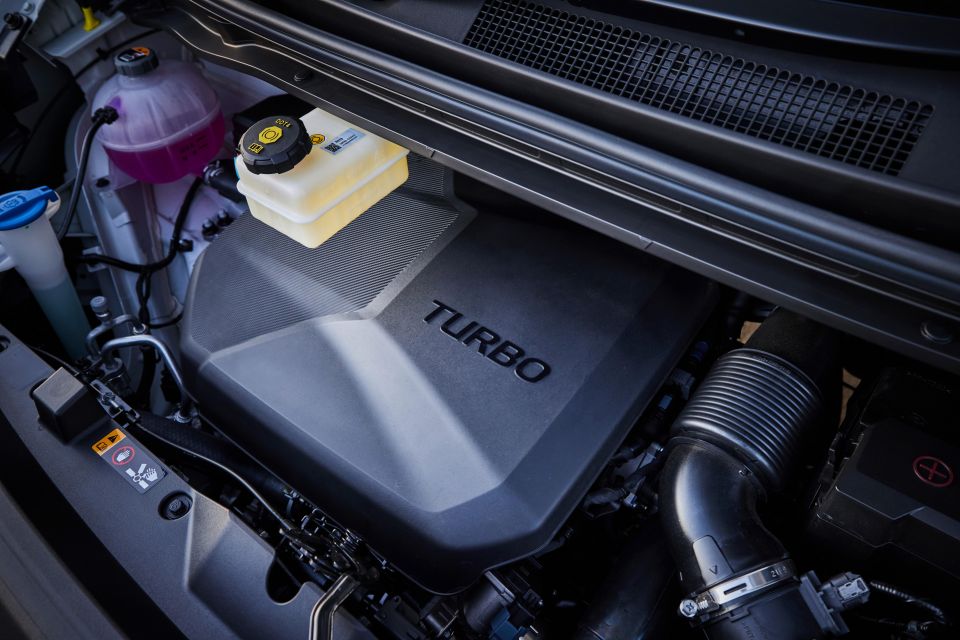
The 2022 Hyundai Staria Load is powered by a 2.2-litre four-cylinder turbo-diesel producing 130kW of power and 430Nm of torque.
There’s no petrol V6 option, mirroring the Toyota HiAce range. Unlike the Staria people mover with all-wheel drive, the Staria Load is front-wheel drive only.
Gone is the manual transmission option. Instead, an eight-speed automatic is standard.
Claimed fuel economy for the Load is 7.0L/100km on the combined cycle. We saw 7.4L/100km on our week-long drive, and 6.8L/100km on a mixed city/highway loop with 650kg in the load bay.
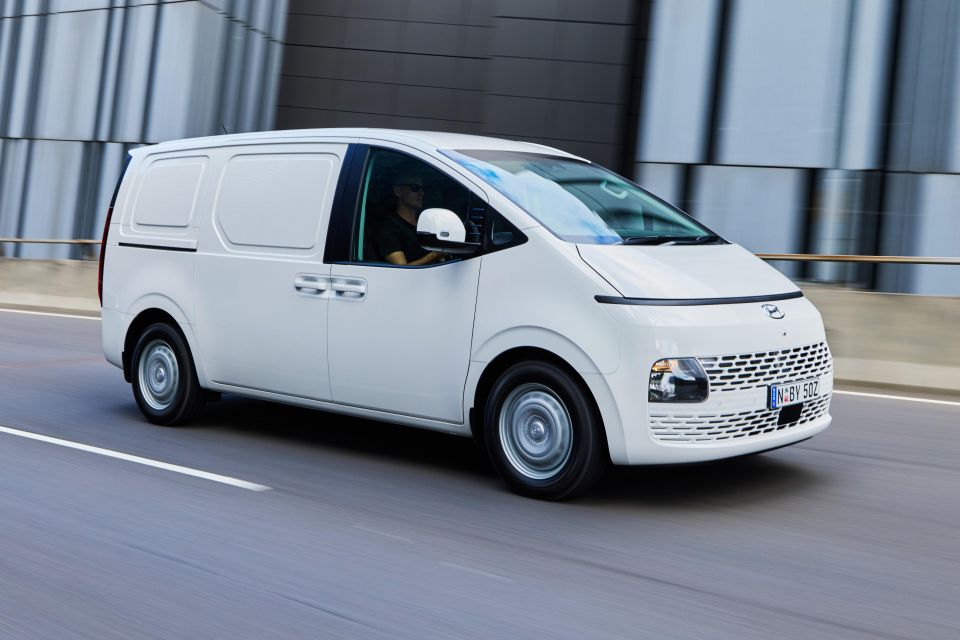
The Staria has more car-like bones than the iLoad it replaces, which translates to a more car-like drive.
The diesel engine fires quickly and quietly, and there’s no vibration through the leather steering wheel on cold starts.
Hyundai has done a good job damping down noise from the load bay. In some base vans you can hear stones pinging and fuel sloshing; small sounds that are amplified as they echo around a big, open metal space.
There’s still a hint of that in the Staria Load, but it’s better suppressed than in any of its rivals – or very close to it. A side-by-side with the HiAce beckons.
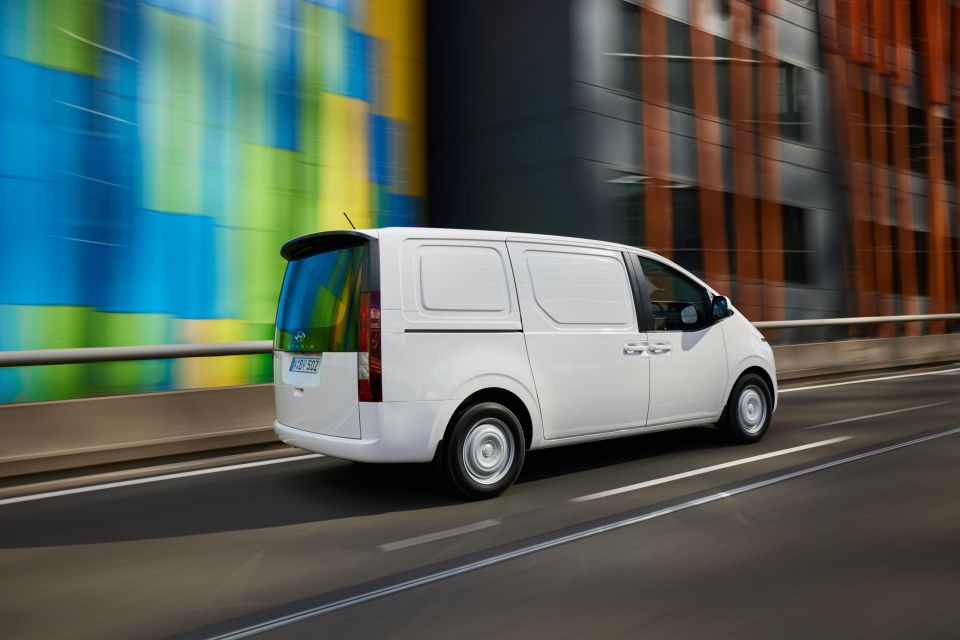
Sure, it’s not a Rolls-Royce, but there’s a degree of polish present in the Staria Load that you previously wouldn’t have expected from a van.
The engine has outputs on a par with those of its biggest rivals, and its unladen performance is excellent. It doesn’t feel too stressed, even if you need to get a bit of a move on, and the switch to front-drive hasn’t caused any traction problems.
With light steering and excellent visibility from its panoramic windows and windscreen, not to mention the suite of driver assists, it’s one of the easier vans to drive in the city.
Hyundai’s blind-spot camera (which projects a feed of the side of the car when you indicate) would make it even easier to drive, given the lack of rear-side windows, but it’s tech that’s still reserved for its high-end SUVs.
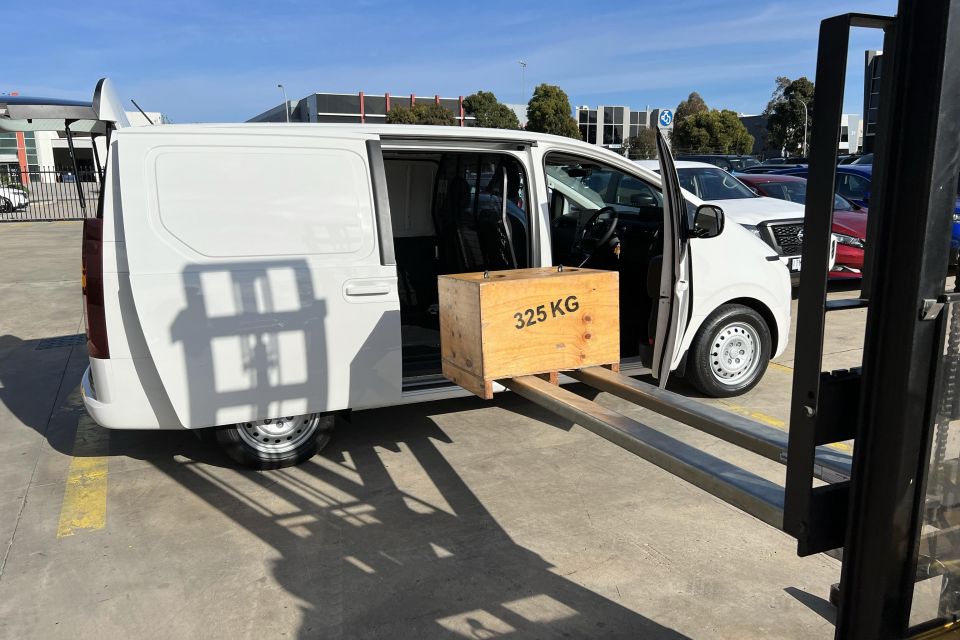
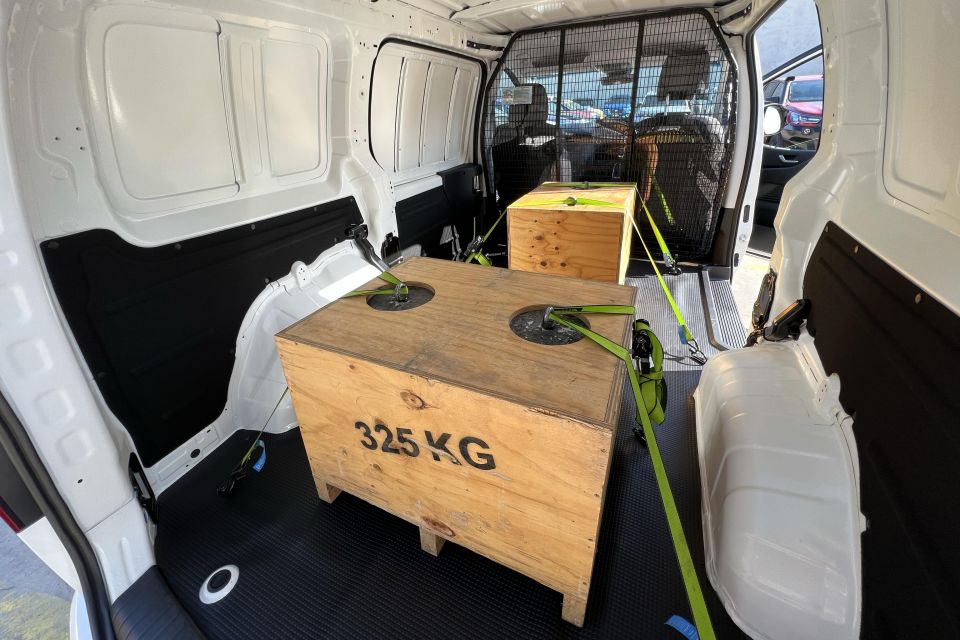
Where expert car reviews meet expert car buying – CarExpert gives you trusted advice, personalised service and real savings on your next new car.
The Staria also has more than enough muscle to haul a load – as we learned when we slotted 650kg into the back of the Staria Load (just under 60 per cent of its 1090kg payload) and took it on a mixed city and highway loop. After all, this isn’t a style statement, it’s a van.
The biggest change is in the ride, which can be a bit brittle with nothing in the back. That’s often the case with dual-cab utes and vans, which need to compromise their unladen ride to make sure they don’t become a crashing, sagging mess when close to their maximum payload.
Putting 650kg in the load bay takes the edge off the ride, but doesn’t do too much to dull the engine’s outputs. There’s still plenty of performance off the mark, and the eight-speed automatic transmission is smart enough to hold gears a bit longer so you don’t get bogged down.

It’ll pull happily up hills, and sits easily at the legal limit using cruise control. Speaking of which, the adaptive cruise, lane-keep assist, and lane-centring all work as advertised with a load on board.
Hyundai’s lane-keeping assist is still too aggressive for my liking, but it’s a more sophisticated system than the brake-based assistant in the Toyota HiAce. If you’re spending all day behind the wheel there’s no doubt having a proper lane-keeping assistant is a positive.
Hyundai touts the surround-view camera on the Staria as a segment-first, and it’s a handy inclusion. This is a big van, and manoeuvring it in small spaces requires some finesse.

Servicing is required every 12 months or 15,000km in the Staria Load, whichever comes first.
The first five services are priced at $360 each, for a combined cost of $1800.
Hyundai covers its vehicles with a five-year, unlimited-kilometre warranty.
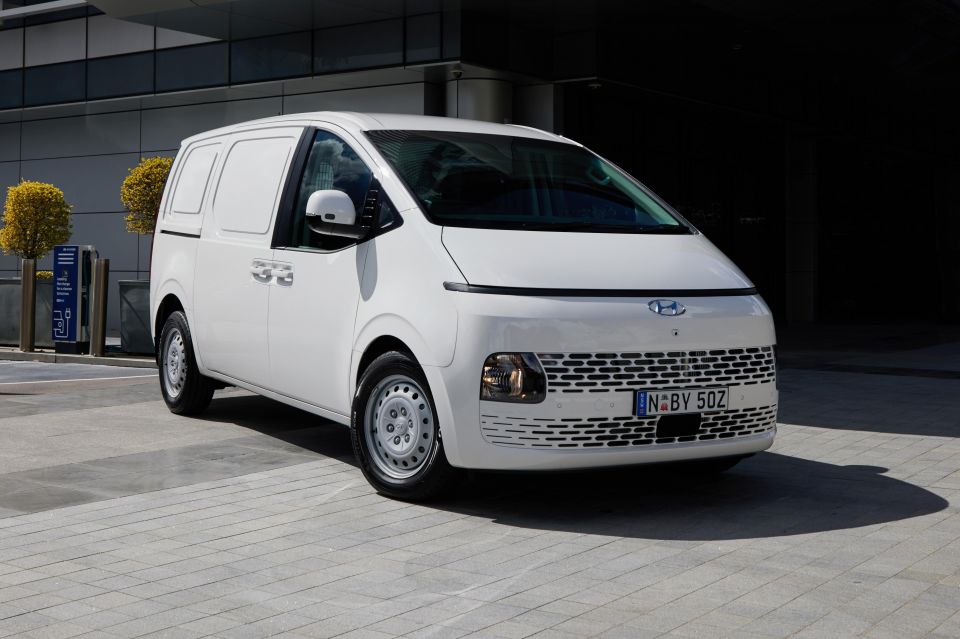
Is the Staria Load a great leap forward for van kind?
Hyundai hasn’t reinvented the wheel, but it’s certainly a big step in the right direction.
More space, more refinement, more safety equipment, and a more efficient engine is a tasty list of ingredients; the fact Hyundai isn’t charging out-of-this-world prices is the icing on the cake.
Forget about the creaky old iLoad, this is a thoroughly modern load-lugger that should make Toyota and Ford very nervous.
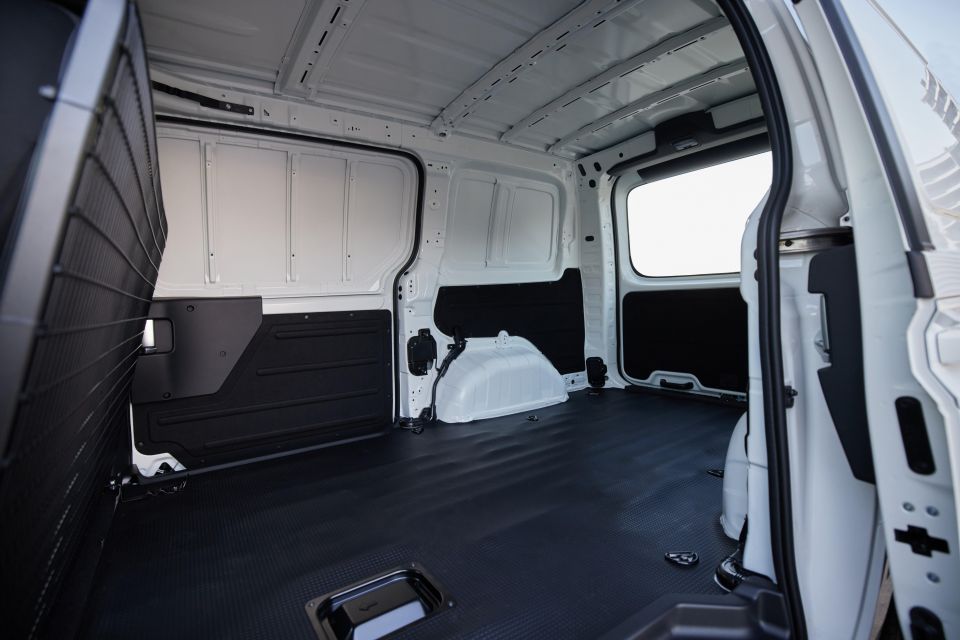
Click the images for the full gallery
Where expert car reviews meet expert car buying – CarExpert gives you trusted advice, personalised service and real savings on your next new car.
Scott Collie is an automotive journalist based in Melbourne, Australia. Scott studied journalism at RMIT University and, after a lifelong obsession with everything automotive, started covering the car industry shortly afterwards. He has a passion for travel, and is an avid Melbourne Demons supporter.


Dave Humphreys
5 Months Ago
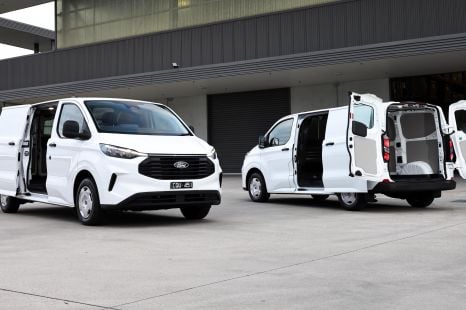

Max Davies
5 Months Ago


Josh Nevett
4 Months Ago
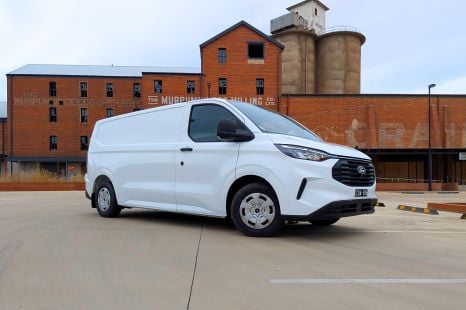

William Stopford
3 Months Ago
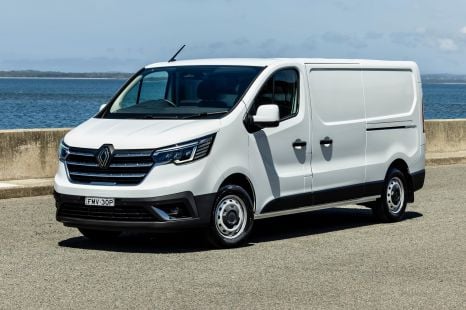

Max Davies
2 Months Ago
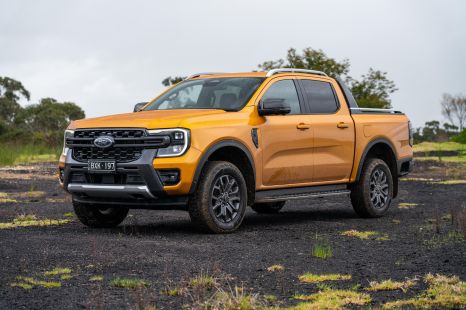

William Stopford
2 Months Ago